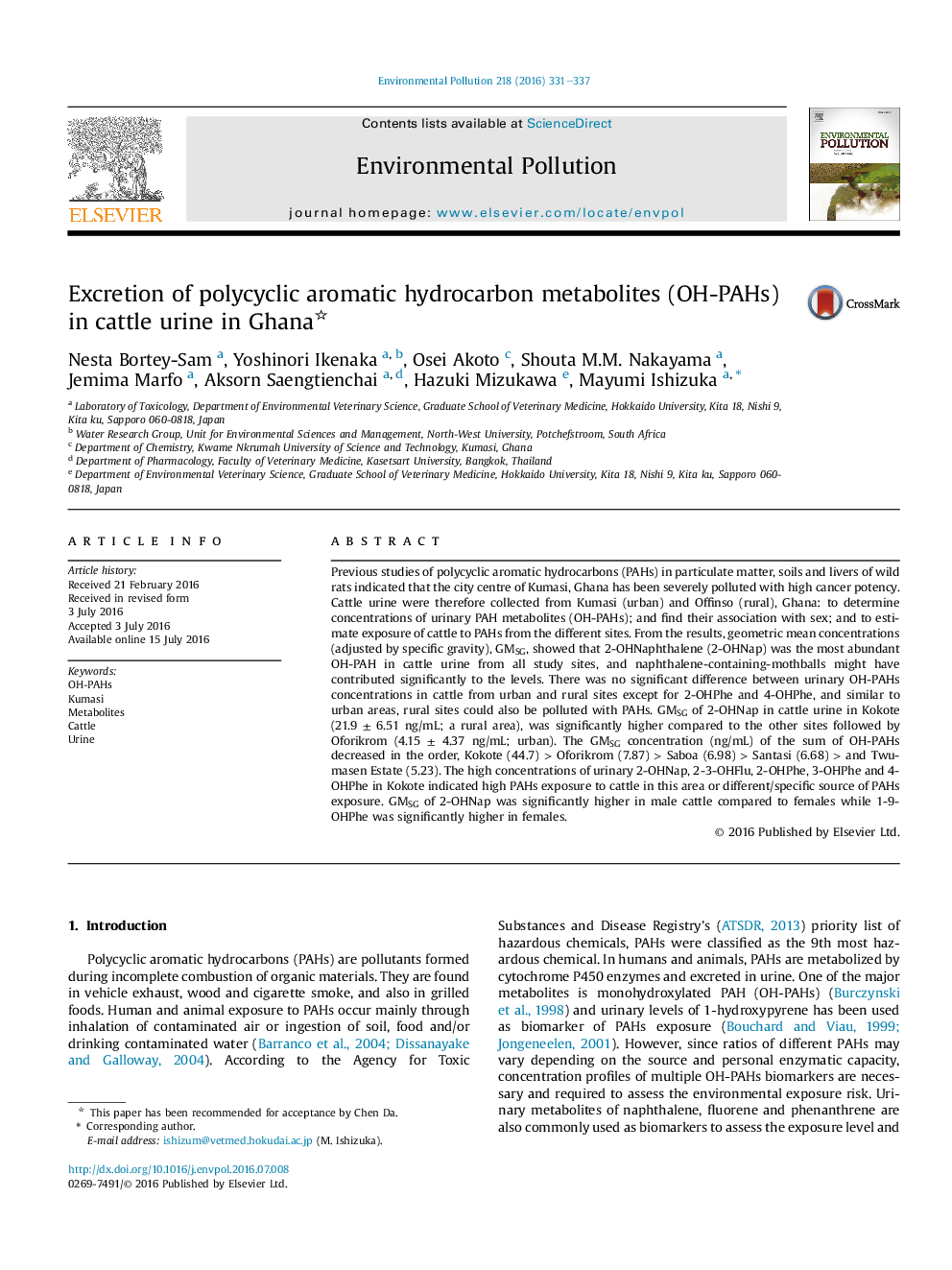| Article ID | Journal | Published Year | Pages | File Type |
|---|---|---|---|---|
| 6314593 | Environmental Pollution | 2016 | 7 Pages |
â¢PAH metabolites were measured in cattle urine in urban and rural areas in Ghana.â¢2-OHNaphthalene (2-OHNap) was the most abundant PAH metabolites.â¢Mothballs containing naphthalene might have contributed to 2-OHNap in cattle urine.â¢Exposure of cattle in Kokote (rural area) to PAHs was higher than the other sites.â¢2-OHNap was higher in male cattle compared to females but opposite for 1-9-OHPhe.
Previous studies of polycyclic aromatic hydrocarbons (PAHs) in particulate matter, soils and livers of wild rats indicated that the city centre of Kumasi, Ghana has been severely polluted with high cancer potency. Cattle urine were therefore collected from Kumasi (urban) and Offinso (rural), Ghana: to determine concentrations of urinary PAH metabolites (OH-PAHs); and find their association with sex; and to estimate exposure of cattle to PAHs from the different sites. From the results, geometric mean concentrations (adjusted by specific gravity), GMSG, showed that 2-OHNaphthalene (2-OHNap) was the most abundant OH-PAH in cattle urine from all study sites, and naphthalene-containing-mothballs might have contributed significantly to the levels. There was no significant difference between urinary OH-PAHs concentrations in cattle from urban and rural sites except for 2-OHPhe and 4-OHPhe, and similar to urban areas, rural sites could also be polluted with PAHs. GMSG of 2-OHNap in cattle urine in Kokote (21.9 ± 6.51 ng/mL; a rural area), was significantly higher compared to the other sites followed by Oforikrom (4.15 ± 4.37 ng/mL; urban). The GMSG concentration (ng/mL) of the sum of OH-PAHs decreased in the order, Kokote (44.7) > Oforikrom (7.87) > Saboa (6.98) > Santasi (6.68) > and Twumasen Estate (5.23). The high concentrations of urinary 2-OHNap, 2-3-OHFlu, 2-OHPhe, 3-OHPhe and 4-OHPhe in Kokote indicated high PAHs exposure to cattle in this area or different/specific source of PAHs exposure. GMSG of 2-OHNap was significantly higher in male cattle compared to females while 1-9-OHPhe was significantly higher in females.
